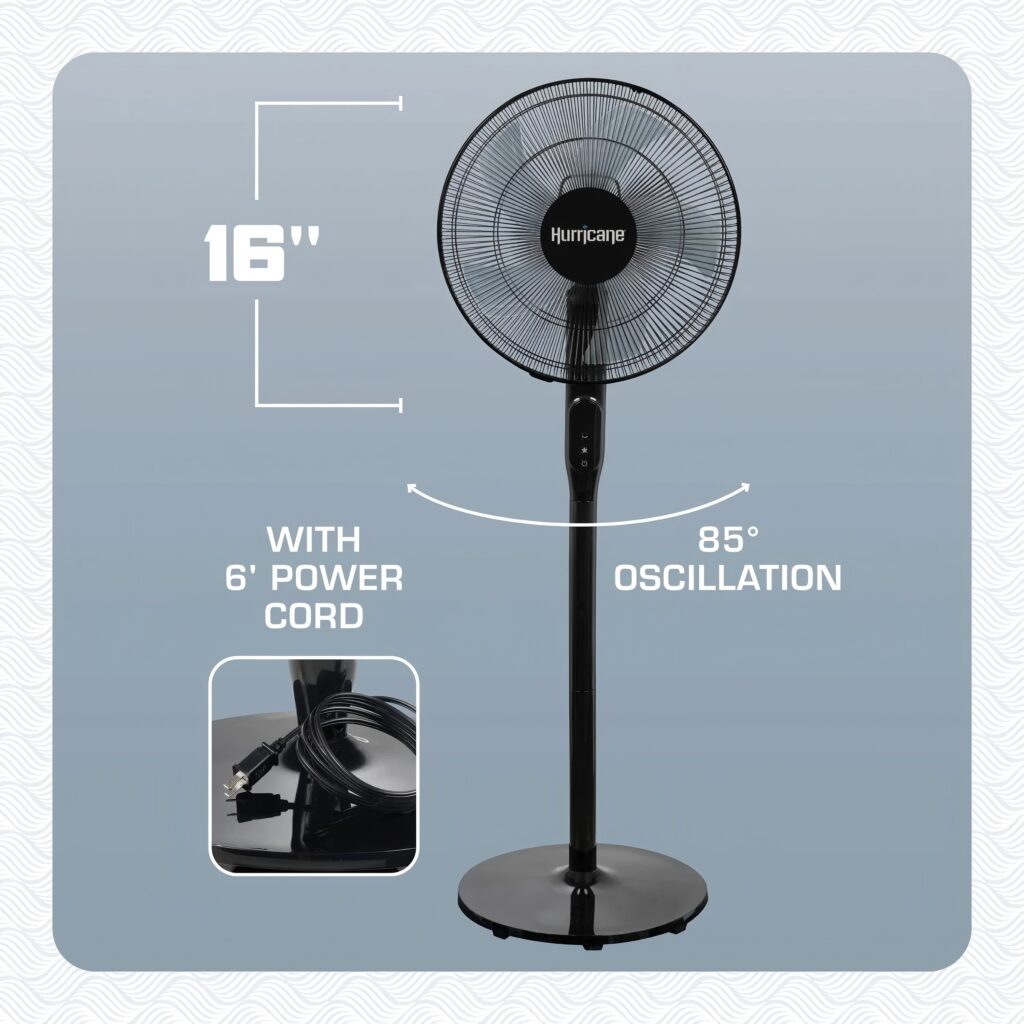The Impact of Stand-Up Fans on Electricity Usage: A Comprehensive Guide
Abstract Stand-Up fans are the go-to choice for cooling down in many homes and offices in the summer,The Impact of Stand-Up Fans on Electricity Usage but their electricity consumption is often overlooked. This article takes a closer look at the electricity usage of stand-up fans, analyzes the key factors that affect their energy consumption, and provides practical energy-saving tips. By understanding the energy consumption characteristics of fans, optimizing their usage, and focusing on environmental benefits, you can save money on electricity bills and help protect the environment while keeping cool.

I. 소개
The Impact of Stand-Up Fans on Electricity Usage Stand-Up fans are a popular choice for cooling down in the summer due to their portability and affordability. However, with rising energy costs and growing environmental awareness, it is important to understand their electricity consumption. This article will comprehensively analyze the electricity usage of stand-up fans, explore their environmental impact, and provide practical energy-saving tips to help users achieve efficient use.
II. Do stand-up fans consume electricity?
- Energy consumption characteristics of stand-up fans The electricity consumption of stand-up fans depends mainly on their motor power and operating time. Most standing fans use between 50 and 100 watts, which is much less than an air conditioner. Argument 1: A 75-watt fan running for 10 hours consumes only 0.75 kWh of electricity, while an air conditioner may consume up to 10 kWh.
- Key factors affecting energy consumption
- Fan size: Large fans are usually equipped with higher-power motors, which consume more electricity. Argument 2: An 18-inch fan consumes 20%-30% more electricity than a 12-inch fan.
- Wind speed setting: High speed consumes significantly more electricity than low speed. Argument 3: Switching a fan from low speed to high speed may increase power consumption by more than 50%.
- Duration of use: Long-term operation significantly increases power consumption. Argument 4: A 100-watt fan running continuously for 24 hours consumes about 2.4 kWh of electricity.
III. Practical tips for reducing the power consumption of standing fans
- Choose energy-saving fans Modern fans are often equipped with energy-saving features, such as DC motors and timed shut-off functions. Argument 5: DC motor fans consume more than 50% less power than traditional AC motor fans.
- Optimize usage
- Combined with natural ventilation: Open windows for ventilation in the early morning and evening to reduce fan running time. Argument 6: Combining natural ventilation can reduce fan running time by 2-3 hours and save 30% of electricity.
- Proper fan placement: Place the fan in the center of the room or near the window to improve airflow efficiency. Argument 7: Optimizing the fan placement can increase the cooling effect by 20%, thereby reducing running time.
- Use smart features Many modern fans are equipped with smart temperature control and sleep mode, which can automatically adjust the wind speed according to the ambient temperature. Argument 8: Using the smart temperature control function can reduce unnecessary electricity consumption and save 15%-20% of electricity.
IV. Environmental impact of standing fans
- Environmental consequences of high energy consumption High electricity consumption not only increases electricity bills, The Impact of Stand-Up Fans on Electricity Usage but also exacerbates greenhouse gas emissions and accelerates climate change. Argument 9: The production of each kilowatt-hour of electricity emits an average of 0.5 kg of carbon dioxide. Reducing electricity consumption can directly reduce carbon footprint.
- The importance of energy saving By choosing energy-saving fans and optimizing their use, users can contribute to environmental protection. Argument 10: If each household reduces the fan running time by 1 hour, millions of tons of carbon dioxide emissions can be reduced each year.
V. Common misunderstandings about standing fans and electricity consumption
- Misunderstanding 1: The power consumption of standing fans is comparable to that of air conditioners In fact, the power consumption of standing fans is only about one-tenth of that of air conditioners. Argument 11: The average power of an air conditioner is 1000 watts, while the fan is only 50-100 watts.
- Myth 2: All fans have the same energy consumption The energy consumption of fans of different models and brands varies significantly, and energy-saving fans consume less power. Argument 12: DC motor fans consume more than 50% less energy than traditional fans.
- Myth 3: The running time of the fan has little effect on energy consumption Long-term operation will significantly increase power consumption, The Impact of Stand-Up Fans on Electricity Usage and optimizing the use time is the key to energy saving. Argument 13: Reducing the fan running time from 12 hours to 8 hours can save 33% of electricity.
VI. Conclusion
The Impact of Stand-Up Fans on Electricity Usage As an economical cooling tool, the power consumption of the vertical fan is relatively low, but it can be further reduced through reasonable use and optimized settings. Choosing energy-saving fans, optimizing usage methods, and combining other cooling measures can not only reduce electricity bills, but also contribute to environmental protection. Hopefully, this article has provided you with valuable information that will help you stay cool while being energy efficient.
Summary The power consumption of a standing fan is affected by a number of factors, including fan size, speed setting, and usage duration.The Impact of Stand-Up Fans on Electricity Usage Users can minimize power consumption by choosing energy-efficient fans, optimizing usage, and focusing on environmental benefits. Let’s start today by paying more attention to the power consumption of electrical appliances and move toward green living together.
